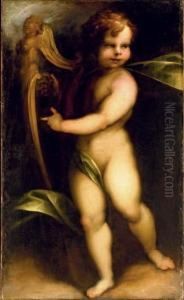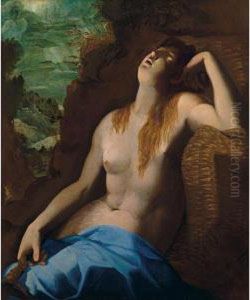Aert Mijtens Paintings
Aert Mijtens, sometimes referred to as Aert Mytens, Aert Mijtens the Elder, or Aert Meytens, was a Flemish painter born in 1541 in Brussels, part of the Habsburg Netherlands. His work and life are emblematic of the late Renaissance period, transitioning into the early Baroque. Mijtens is not as widely recognized as some of his contemporaries, but his contributions to art, particularly in religious and mythological themes, demonstrate the stylistic shifts and the vibrant art scene of his time.
Mijtens’ early life is somewhat obscured by the mists of history, with little documented about his training and early career. However, it is known that he was active during a time when the Low Countries were a melting pot of artistic innovation, heavily influenced by the Italian Renaissance. This was a period when artists were beginning to explore new themes, techniques, and perspectives, moving away from purely religious subjects to embrace mythology, portraiture, and landscape painting. Mijtens, in his work, displayed a keen grasp of these evolving trends, incorporating detailed landscapes and lifelike figures into his compositions, which were often imbued with religious or mythological significance.
Throughout his career, Mijtens showed versatility, working on a variety of projects from altarpieces for local churches to more intimate mythological scenes. His style is characterized by a rich use of color, meticulous attention to detail, and dynamic compositions that breathe life into biblical and mythological narratives. Notable among his works are altarpieces that exhibit his skill in creating depth and perspective, traits that align him with the principles of the Renaissance.
Mijtens spent the majority of his career in Brussels, a city that, at the time, was a significant cultural and artistic hub in the Netherlands. Despite the turbulent political and religious climate of the 16th century, with the Spanish Habsburgs exerting control over the region, Mijtens managed to maintain a successful career. This was a period marked by the Counter-Reformation, which had its own impact on the art world, with a demand for religious artworks that adhered to the new directives of the Council of Trent. Mijtens navigated these changes, adapting his work to meet the evolving demands of his patrons.
The artist passed away in 1602 in Brussels. While Aert Mijtens may not have achieved the fame of some of his contemporaries, his body of work remains a testament to the richness and diversity of Flemish art in the late 16th and early 17th centuries. His paintings offer a window into the transition from the Renaissance to the Baroque, reflecting the complexities and beauty of this pivotal era in art history.

